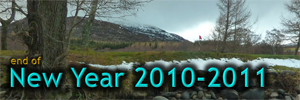“New Year 2010-2011” series of
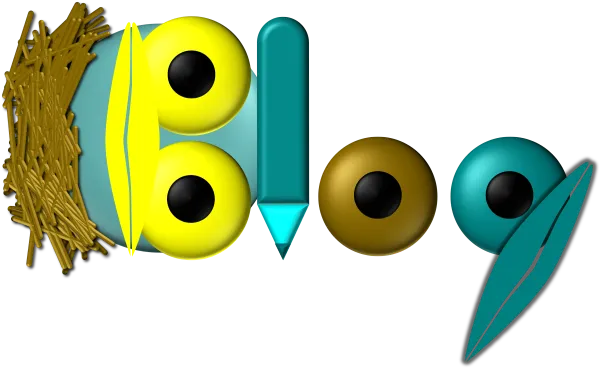 articles
articles
2010
2010 Dec
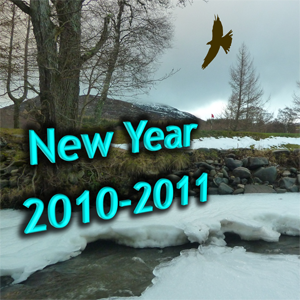
Dec 29 Wed 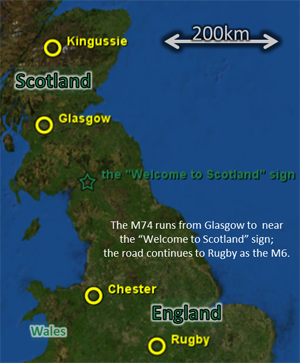
Today I photographed the “Welcome to Scotland” sign on the M74. I didn’t photograph the several buzzards.
Tonight I will sleep in the village of Kingussie.
Dec 30 Thu
In Kingussie, I saw a handsome male bird1 on a hedge. The bird was wearing a splendid robe, autumnal golden in colour with leafy russet speckles. The tail feathers were lusciously long, matching the ornate robe. The bird’s mask was a stirring ruby, two rubies in fact, one per chic cheek; whilst the forehead and nape were a stunning summery emerald. The bird was inspiring awe, and was photographed.
Footnote
1 The phrase “male bird” is an oxymoron, because “bird” can be a slang term for a female.
Dec 31 Fri
Whilst playing Monopoly, I realised why the singular of “dice” is “die”. When I rolled the dice, that’s usually what I did. Die.
2011
2011 Jan
Jan 01 Sat 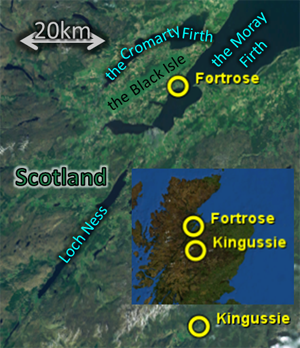
I went to Fortrose with my father, sisters, and aunt’s husband, and our dog, and the dog of my aunt’s husband.
Fortrose is on the Black Isle, a region in Northern Scotland with a misnomer for a name. The Black Isle is a peninsula, and it’s not black. It’s famous for having Red Kites (Milvus milvus), carnivorous birds that aren’t known by a misnomer - they are indeed red and can soar and swoop like a quadrilateral toy. Kites (the birds) are huge, and distinguisable from Buzzards by their forked tails (like terns) and coloration.
Lunch was at the house belonging to my aunt’s husband’s mother, a very hospitable host. My Dad said I didn’t need to take my camera into the dining-room, but I took the device because I didn’t trust myself to remember it after the meal. I sat next to a window.
Midway through lunch, Sister 1 suddenly exclaimed, “Big bird!” (her knowledge of ornithological nomenclature doesn’t appear to be vast). A Red Kite had alighted on a post on a field outside the dining-room window. I quickly took some photos of the bird of prey. Then the kite took flight.
Then a buzzard appeared, and stood on the field. A Carrion Crow chased it off after I had taken photographs.
The meal was excellent: broth, cheese and crackers, and Tunnock’s Tea-cakes.
I continued to see wildlife after lunch. At Fortrose Beach, I took lots of photos of lots of common sandpipers (Actitis hypoleucos) and some photos of some oystercatchers (Haematopus ostralegus). There’s a nice light-house at Fortrose Beach, and some herring gulls (Larus argentatus).
In the sea (the Moray Firth) were some seals. In the word “seals” is the word “sea”. Further out to sea were some black birds floating; I don’t know what species they were.
The common sandpipers flew off, flew around a bit as a flock (like a school of fish, as one big entity to confuse and scare predators). Then they settled back where they had been thirty seconds previously, pecking amongst the sea-weed where sea meets shore.
A herring gull landed on a wooden railing beside the car-park. My photos of it are blurred.
Jan 03 Mon
Chester
Chester
